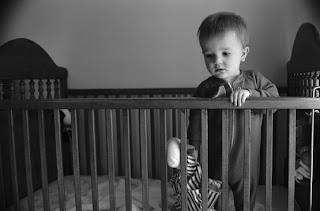Did you know that it costs more to kennel a dog than the State pays foster parents to take care of our neediest children? It’s true!
Through a cooperative federal-state program, California agrees to reimburse foster parents for the cost of providing foster children with food, clothing, shelter, and other various necessities. In return for this agreement, the federal government pays 50% of California’s cost for these reimbursements. It’s worth noting that these are simply reimbursements for costs – we still require foster parents to volunteer their time and they are in no way compensated for their time. They are simply reimbursed for their added expenses. In establishing this cooperative federal-state program (also known as the Child Welfare Act), Congress realized the importance of making sure that foster parents don’t have to take from their own savings or retirement accounts to appropriately care for a foster child.
Unfortunately, California has not lived up to its end of the agreement. California has never actually calculated how much it costs a foster parent to provide the necessities and has, subsequently, allowed the rates we pay foster parents to drop so low that, depending on the age of the child, we don’t cover approximately half of foster parents’ costs. This is the reality even when we don’t add in the cost of childcare. Because of this disparity, California counties have experienced an average decline of 30 percent in licensed foster family homes. Sacramento, Santa Clara, San Mateo, and Sonoma counties report losses as high as 45 to 50 percent, and San Bernardino County has reported a decline of 61 percent. Because of the increasing shortage of available foster families in California, thousands of children are unnecessarily relegated to institutionalized group homes. These group homes not only produce worse outcomes for children than family homes (higher incidences of arrests, use of public welfare programs, homelessness, illness, and unemployment), they are, on average 5 times more expensive than foster homes – even if we were fully reimbursing foster parents for their costs. Yes, you read that correctly, because we are short-changing foster parents and are, thus, diminishing their supply, we are relegating our foster children to live in settings that provide worse outcomes at a higher cost to our State.
Outrageous, you say? You’re right! So, what can be done? We, at the Children’s Advocacy Institute, filed litigation more than three years ago requiring California to come into compliance with the mandates of the Child Welfare Act. (Find out more about our litigation at http://www.caichildlaw.org/FC_Litig.htm.) More than two years ago, judgment was entered in our favor. The Court found that California has not adequately assessed the cost to foster parents of providing foster care and has underfunded foster parents. Unfortunately, nothing has changed in the past two years. Rates are the same as they were. In May of last year, California finally commissioned a study concerning how to set rates by taking into account the cost factors required by the Child Welfare Act. Unfortunately, we have yet to see either the results of that study or any actual changes to foster parent’s rates. The Court has given the state until April 8, 2011, at noon, to complete implementation of a new method for determining the rates of payments to foster parents. While increasing the rates makes sense economically and for the good of our foster children, I’m not holding my breath. But, we will be ready with further motions to file in Court until this issue is resolved.
In the meantime, you can support your local foster parents. Contact your local child welfare agency to see where you can drop off needed supplies. Check with your child’s extra-curricular provider to see if they will donate a spot in karate or dance classes (or any other classes). If so, again, let your local child welfare agency know. Or, go here http://www.sleeptrain.com/local-foster-kids.aspx to either donate money online or find out where you can drop off supplies. They are currently holding a pajama drive because, as a State, we are not providing adequate funding to give our foster children pajamas to sleep in at night.
About the Author:
Christina Riehl serves as CAI Senior Staff Attorney in the San Diego office, primarily handling CAI's litigation and related activities. Before joining CAI, Christina worked as staff attorney with the Children's Law Center of Los Angeles, where she represented minor clients in dependency court proceedings. Prior to that, she interned with the Honorable Susan Huguenor. Riehl is a graduate of the USD School of Law, where she participated in the CAI academic program.
About the Author:
Christina Riehl serves as CAI Senior Staff Attorney in the San Diego office, primarily handling CAI's litigation and related activities. Before joining CAI, Christina worked as staff attorney with the Children's Law Center of Los Angeles, where she represented minor clients in dependency court proceedings. Prior to that, she interned with the Honorable Susan Huguenor. Riehl is a graduate of the USD School of Law, where she participated in the CAI academic program.

